
I've often wondered if history could be undone, what the result would be on the present.
Applying such a "Back To The Future" angle on the history of the Montreal Canadiens allows one to reconsider many events that transpired over the course of the last 30 years.
Using 20/20 hindsight is no brave musing - sports fans are well accustomed to being Monday morning quarterbacks. It is fairly easy to identify what has gone wrong in any era of a sports franchise. In terms of the Canadiens spiral from Stanley Cup dynasty of the late seventies to the average team of today, many errors in judgement have resulted in the team being a middle of the pack squad.
Often the Canadiens of recent years have been afflicted with terms such as "once proud", "hard luck", and "falling from grace or glory", so much so that one would confuse them with the Maple Leafs or the Islanders. While Montreal sat outside the playoff picture this spring, their so called decline, in perspective, is far from being as catastrophic as some would have believe.
Since 1979, and with the NHL adding 12 new franchises, every teams odds of winning the Stanley Cup have decreased proportionately. In the 27 seasons played since then, only the Islanders, Edmonton Oilers, Detroit Red Wings and New Jersey Devils won won more Cups. Colorado and Pittsburgh, as well as Montreal, are the only other teams with multiple Cups. Five other franchises have won single Cups.
If most franchises were dealt the fate of winning but one Stanley Cup per decade, they'd gladly accept that fate. Not in Montreal, where expectations are constantly high, and errors are scrutinized beyond the realm of understanding in most NHL cities.
If only one of the following errors of judgement from the past were to be undone, it would have greatly affected the teams future. Each mistake had pronouced consequences which led to the weakening of team over the years.
It is, of course, futile in a sense, to dwell on those errors - the only upside of going over them is to recognize when they are about to occur again and avoiding them the next time around.
Chronologically, here are 10 mistakes any Hab fan would wince at in hindsight.
10 - Not choosing Mike Bossy in the 1977 Entry Draft.
Who knew that Bossy would string off 9 straight 50 goal seasons in the NHL? Canadiens head scout Ron Caron had an inkling when he pronounced to GM Sam Pollack that he'd found the next Guy Lafleur. Fourteen teams passed on Bossy before the Islanders wisely chose him. Bossy was considered by many to be a soft player in a softer league and many disregarded the compass in his eye. From 1973 to 1977, Bossy rifled off seasons of 70, 84, 79, and 75 with the Laval National of the QMJHL. Still many NHL teams passed on him, including Toronto twice with back to back picks at 11 and 12. The Canadiens opted for a fairly decent player, the Toronto Marlborough's Mark Napier, who would give them a pair of 40 goal season before being packaged off to Minnesota for center Bobby Smith. It was often suggested in hindsight that Bossy would never have met the same fate in Montreal, that a sniper with defensive laxes would have taken too long to find his place in Montreal. I never bought that angle. Five years prior, the Habs drafted a similar player in Steve Shutt. While Shutt's ascent was steady, not immediate, who's to suggest it could not have been the same for Bossy.
9 - Choosing Irving Grundman over Scotty Bowman to succeed Sam Pollack as the Canadiens GM.

Grundman was not a sound hockey man in the eyes of many, often being termed a glorified bowling alley manager by most. He was chosen to succed Sam Pollack based on the fear of what Scotty Bowman, if handed the position, would do to the team, which was dismantle it piece by aging piece. He had been being groomed for the job by Pollack himself before the reigns were turned over in 1978. The Canadiens upper brass wanted Pollack to stay on for a longer term and hoped that Bowman would do so also. With Bowman having little faith in Grundman's capabilities he left after two seasons for what the coach thought were greener pastures in a dual role as coach and GM with the Buffalo Sabres. Spurning the man who would become the winningest coach in the game's history was a giant slip. Grundman would soon be taken to task for passing over local star Denis Savard in the 1980 draft. The bumbling continued as a succession of coaches, including Claude Ruel and Bernie Geoffrion passed behind the bench while the Canadiens raced toward mediocrity. Grundman's era was defined by turmoil and turnover. During his five year stint at the Habs helm, his failing to adequately replace those players that Bowman hinted at moving, dried up to teams depth of draft picks and youth. While some of the remaining vets had enough in the tank to give the Canadiens a surprise Stanley Cup in 1986, only two draft choices in the Grundman era, Chris Chelios and Guy Carbonneau, would have a profound effect on the teams future. After dealing future Norris Trophy winner Rod Langway, along with three other players, in a package to Washington in 1982, Grundman's coffin was prepared. He was fired in April of 1983. He last made headlines in January of 2005, when as a city councellor in Montreal, he admitted to taking bribes in a zoning scandal and was sentenced to 23 months of community service, oddly enough.
8 - Feable Returns on Aging Veterans.

As mentioned before, Grundman stuck to his plan and kept many of the teams aging stars as they passed their prime into their twilight years. Ken Dryden, Yvan Cournoyer, Serge Savard (who would become his successor), Guy Lafleur (under the Savard reign) and Jacques Lemaire all retired with no return. Guy Lapointe, Steve Shutt, and others were traded off for pitances of their worth as their play declined. Roughly half of the team that won four straight Cups were gone with little to nothing to show for it. That is sadly, the Grundman resume. When Serge Savard was named as the next GM of the team, the Canadiens were literally starting over from scratch.
7 - Humiliating Wickenheiser.

One of Grundman's better moves involved a trade that flip-flopped first round picks with the Colorado Rockies in 1980. The Rockies assumed the Habs 18th overall pick while Montreal cashed in with the first overall choice. The local media were all in favor of local product Denis Savard, but Grundman went with the consensus choice of Doug Wickenheiser, who'd scored 89 goals with the Regina Pats the previous year. The GM was raked over the coals for ignoring the local star but the hockey intelliagenca would back the belaboured GM as Wick was clearly called the more refined player at that point. 89 goals in the WHL doesn't lie. Hindsight would actually suggest that the best player in the draft was chosen 7th, Paul Coffey. Where the Canadiens thinkers goofed big time was in sitting out Wickenheiser against Savard's Blackhawks on the opening game of the season. Savard shone as the game's first star, and the Habs prodigy was stung and embarrassed. The local press never let up and the cumulative effect on Wickenheiser, as Savard's star rose, was complete humiliation. Further along, Wickenheiser was being groomed as a two-way center and kept away from Guy Lafleur as a linemate. Checks on his character were given failling grades each year, as the player progressed to become a 25 goal scorer in his third season as a 21 year old. It still wasn't good enough, especially compared to Savard's 100 point seasons. Wickenheiser was shipped in a multi-player deal the following year. Had Montreal only let him play his game, perhaps the 6' 5", 220 lb center could have lived up to his potential. First overall picks are a rare commodity to an organization, and montreal wated the only one it had in this timespan.
6 - Corey Forces His Vision Upon Savard

Serge Savard was doing quite well for the team as GM when the man who hired him, Ron Corey, began meddling in his business. Under the former defenseman, the Canadiens had won the Cup in 1986 and made a return trip to lose the final in '89. Corey's background with the Nordiques hid a thinly disguised love of the Canadiens saintly image, and he did not like what he saw. Fiery coach Pat Burns led a group of players with mounting off-ice reputations. With Claude Lemieux as the reigning NHL's public enemy number one, and the bar strip scandals involving Shayne Corson and Chris Chelios, Corey sought to purge the Habs of bad-boy images. In doing so, Corey underestimated the guts and blood contribution of these warriors to the teams overall complexion. His meddling began when he forced Savard to deal off Norris Trophy winner Chelios, who'd been named one of the team's co-captains along with Guy Carbonneau (who Corey would later also have expelled for similar reasons). When the opportunity arose for GM Savard to obtain the Hawks Denis Savard, correcting an old Grundman faux-pas, Corey saw a public relations coup in the making and ordered the deal done. The headlines made for a big splash accross the media, but Savard, Denis, was in total decline. GM Savard never hid his contempt for having to make the deal, and his relation with Corey began to sour. Corey's biggest fear, was in being eventually replaced as team president by ever more popular Savard. Many of Savard's next deals shared the same theme, and faltered for the exact same reason. GM Savard found Chelios to be a cornerstone of the team, and hardly wanted to part with him. Watching Chelios in 2007, one can only wonder, what if?
5 - Major Trades and the Captain Shuffle
In an attempt to breath offensive life and change the room atmosphere of the team, GM Savard parted with a string of players wearing the CH tattooed on their hearts. Guy Carbonneau, Eric Desjardins, John Leclair, Gilbert Dionne, Matthieu Schneider, and Kirk Muller were all dealt off for what seemed good returns at the moment, but the soul of the team had been ripped out. Finding a suitable character player to wear the "C" became an issue for the omnipresent media hounds to ponder. After Carbonneau's fickle finger salute earned him a ticket out of town, Muller filled the role briefly until traded. The team who hadn't traded a captain since 1962 was about to deal of a third in Mike Keane, generously thrown in as part of the Roy deal in 1995, simply because the team president felt an english captain was unsuitable. Ensuing captain Pierre Turgeon hung around long enough to transport a barely lit torch from the Forum to the Bell Centre before asking off the ship. Vincent Damphousse was fairly effective captain during the teams most dismal years. The combined multitude of trades and lack of leadership led to the team became ordinary, heartless, and dull in record time.
4 - The Housecleaning of 1995
With the Canadiens missing the 1995 playoffs in a strike shortened season, a panic mode set in. Team president Ronald Corey was aware of infighting amongst players on the team and wanted to make changes. GM Serge Savard preached patience, but when the 1995-96 edition of the Habs got off to an 0-5 start, Corey wanted coach Jacques Demers fired. During the 1995 calander year the Canadiens had traded away important team pieces, but those changes did little to avert the teams misfortune. Savard flatly refused to place the blame on coach Demers and refused to fire him. Corey couldn't understand that Savard was on the side of stability, and sent his GM packing as well as his coaching staff. What ensued was a debacle of major consequences that would send the team spiralling for the next decade.
3 - Hiring Inexperienced Puppets
In a bumbling showcase of ineptitude, Corey was left to his own devices and promptly hung himself as he scrambled to replace Demers and Savard overnight. It was a comedy worthy of the Maple Leafs worst missteps when Corey introduced the suitable replacements after less than a weeks search. The PR machine rolled out the BS promptly as the attributes of new GM Rejean Houle and coach Mario Tremblay were bantered about with great pomp and circumstances. They were both former Habs of glory, we were fed, so hence they must be proven winners. Initial reaction was somewhat tempered when Tremblay immediatly set a Habs coaching record by winning his first six games. Everything unravelled from there. Despite his faults, credit must go in some part to the coach who managed to steer this mess of a team into the playoffs two seasons straight. Had he been groomed for the job in any way, it might have prepared him to deal with the brick aimed at his face that he never saw coming. Houle was primarily a puppet of Corey's, who had no prior imput in the team and no one left to consult on matters of importance. He was also led blindly to his day of infamy.
2 - Dealing a Hall Of Fame Goalie on 72 Hours Notice
The Patrick Roy of 1995 was by no means a happy camper. He was essentially the captain of the team, while also being it's most controvercial dressing room member. After Roy lost an ally in Demers, his composure frittered away, making his play a shadow of its former self. Off ice issues were also at the heart of his unhappiness and he decried the trading away of several key team members. To put it point blank - he and Tremblay hated each others faces. Words exchanged between the two dated back a few years and the wounds were still open between he and the former broadcaster turned coach. No need to pour over the details of a certain December night in '95 - suffice to say only that it was destined to happen considering the relationship between the two. That was something that Corey never took into consideration upon hiring the inexperienced duo. No thought was given to repairing the burnt bridges - Roy was going to be dealt. Houle went back to the scene of a previous trade inquiry by Savard (Roy to the Avalanche for Fiset, Nolan, and Deadmarsh) and tangoed with the ever sly Pierre Lacroix and came out fleeced. In return for his franchise player, Houle was served three journeyman players at best. Little thought was given to upping the ante by negotiating with other teams, they just wanted the festering Roy scenario out of their hair as quickly as possible.
1 - The Alex Kovalev Hot Potato
The Andre Savard and Bob Gainey regimes were comparitively quiet as opposed to what had gone on in the years prior. With the Canadiens meadering towards a perenial middle of the pack team, there has been nowhere to go but up. A succession of halfway decent coaches came and went until hope sprung eternal with the announcement of Bob Gainey as the teams new GM. Both GM's have managed to stockpile a depleted farm system with a bevy of talented prospects. The Gainey era has been pretty much error and controversy free until the dark side of Alex Kovalev reared it's ugly head this past season. Has this enigmatic and moody player's situation been mismanaged? Does his personality clash with that of present coach Carbonneau? Could it be that Kovalev simply had a bad year? It is starting to look as thought the player is more bother than he is worth. Whether Gainey is able to ship him off before further internal damage is done remains to be seen. The issue is certain to remain a hot topic until it is dealt with in definitive fashion.










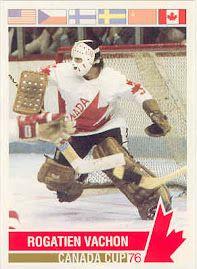
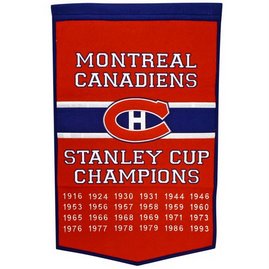







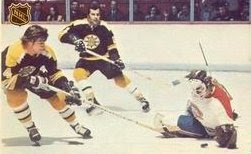



















































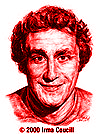



































































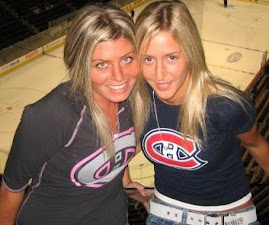


















7 comments:
New to this site. Love this article and "Canadiens History Change" one as well. Just got another copy of Robinson's book and read your post about his last days. I heard from a very good source that if Bowman had been given the GM job, the first two players to go were Shutt and Lapointe, who were both very popular with the fans. Management had to hire Grundman to protect their investment.
I also learned that the reason for the infamous Washington trade of 1982 was that Langway had blood on the knee or something and was considered damaged goods, so the trade was Engblom and Jarvis for Green and Walter, Laughlin was a throw-in.
I have two questions for you:
1. Why was Wickenheiser, who was 6'1"not 6'5", by the way, so mediocre? Claude Ruel said that he was just not the player we though he was but that is an understatement as Wick set WHL scoring records and was the consensus number 1 pick in 1980. What happened?
2. What was the reason that Lafleur went downhill so suddenly and permanently? He was only 28 in 1980.
Really enjoy your site.
John Pressman
.
I meant "Robinson's last days ...in Montreal"
Thanks for the kind words John, and I'm glad that you enjoy the site. Lots of fun stuff in the monthly archives if you enjoy the dig.
It is true that Bowman would have dismantled the team. I'd never heard that about Shutt and Lapointe, but in my opinion that might not have been a bad place to start. They returned little for both in the end.
Also factoring into the Langway deal was his unhappiness at playing in Canada and paying high Quebec taxes. He practically forced Grundman's hand by refusing to negotiate his next contract. He made it clear he did not want to persue his career in Montreal.
On Wickenheiser not panning out - take your pick of reasons.
Ruel was his first coach and the former Habs scout clearly favored drafting Denis Savard. He often chidded Wick in comparisons.
The Habs also tried to "break" him into being more of a two way player. That was how his progression and ice time were measured.
Seeing as he was perhaps a tad fragile after all this, his confidence took a beating. In hindsight he should have been let loose offensively, with the finer points of backchecking being covered later.
I recall that in 1980, my hometown Cornwall Royals, with Hawerchuck, Gilmour, Marc Crawford and Scott Arniel put Wickenheiser in a bag and hid him in the Memorial Cup. He simply was brutal in the biggest junior game of his career. I remember watching it, and knowing the Habs were likely to draft him, I can honestly say that I saw nothing of him that game.
For Lafleur, his decline was two fold.
A knee on knee hit by Hartford's at Boutette in the 1980 playoff's is often to blame for it. He never had the same quickness after that, though he was still fast as heck in a straight line.
The other side of it is that Lafleur lived the high life in the fast lane a little too long. Drinking and smoking 2 packs a day has it's toll.
The quality of the team, and the coaching had also changed.
Everything added up after some time and injuries that never slowed Lafleur down before, started to have an impact.
More than any other hockey player, Guy is the reason I am a hockey fan. At age 9, I saw him play live with the Quebec Remparts against the Royals, and he simply captivated me beyond belief.
I've never been able to shake what he still means to me to this day.
Thanks for your questions John. I hope my answers helped.
Robert, enjoyed your response. I love your site but don't want to monoplize it as it is a blog rather than a forum, however, I have many questions for someone with your vast knowledge of Canadien's history. Is this the best way to contact you?
Did you ever notice how management looked for players of a similar mold to replace current players? Jarvis=Acton=Carbonneau or Gainey=McPhee or Believeau=Mahovlich=Wickenheiser=Smith or Reisborough=Daoust=Skrudland or even Lafleur=Richer, Robinson=Langway, Lapointe=Gingras, Savard=Engblom etc?
By the way, the 1980 playoff game between Harford and Montreal was the last game for both Gordie Howe and Bobby Hull. Some say that with the knee-on-knee hit on Lafleur by Pat Boutette that it was the last game for the "real" Lafleur as well!
Also the Langway had to be traded because he was an American playing in Quebec story is a load of nonsense. This is before the days of free agency, what is he going to do, quit hockey and fix cars for a living if he was not traded to an American-based team??? I believe Sam Pollock would have found a way to keep him in Montreal. Have you heard the "damaged goods" story about Langway?
Lastly, a very good source told me that Jacques Demers handling of Roy caused a rift in the dressing room between the pro-Roy and anti-Roy teammates. Trembly was brought in with an eye to getting rid of Patrick and all his supporters. It still does not explain the lop-sided nature of the Roy trade. You are virtually handing the Stanley Cup to any competitiitve team, how about at least ONE first round draft choice?
John, the American dollars theory is not nonsense. It had been an ongoing drama between between management and Langway that was as old as his WHA Birmingham Baby Bulls jersey. I vividly recall not only reading about it, but having conversations about it with my old man at the time. It was pretty common knowledge in the day.
Other than drafting Langway, Pollock had few dealings with him. By the time he suited up for Montreal, Irving Grundman was GM.
According to Larry Robinson's book, when the WHA was about to be taken in, Grundman threw a little scheme into the contracts of Langway, Mark Napier and Cam Connor, that made the three ineligible for that year's dispersal draft. The status of all 3 kept them from being on the team's unprotected list, as the Canadiens list of protected players was already full.
This essentially blocked Langway's free agency, so to speak, and forced him into a contract with the Canadiens who held his rights. He remained unhappy with this situation each year until he was traded. Money was a big deal with him, and had a lot to do with why he turned pro with the Bulls at age 18.
http://www.legendsofhockey.net:8080/LegendsOfHockey/jsp/LegendsMember.jsp?mem=p200203&type=Player&page=bio&list=#photo
The Legends of Hockey site puts the disagreement this way in the Langway bio:
"Things were about to change however, as the lower Canadian dollar would once again rear its ugly head. Although he wanted to remain in Montreal, the Canadiens were unable to fill Langway's compensation request due to his loss of revenue because of higher Canadian taxes and the lower Canadian dollar."
As far as injuries to his leg goes, I remember something, either an All Star game or Canada Cup injury, having to do with old blood clots having formed in the knees that were to blame for muscles spasms or something. Whatever the case, it wasn't the reason he was traded, as Grundman cited the money issues at the time.
The threat of Langway holding out must have been serious enough, and there were two precedents where Canadiens players retired due to such conflicts in Dryden and Bill Nyrop, who incidently both became lawyers.
The one "damaged goods" theory that always bothered me was recently clarified by Serge Savard when he admitted that team doctor's assessment of Chris Chelios in 1991 was the deciding factor for the GM to part with him in the Denis Savard trade.
As for the Demers' cuddling of Roy, the former coach denies it, but everyone else ( lots of players ) concurs that the goalie ran the dressing room like he was captain. It's an old story. Demers will never stain the man who helped put a ring on his finger.
I doubt that Tremblay was brought in specifically to take down Roy, although he was mindfull of his attitude, having been a journalist around the team. His first words to the goalie as coach are reputed to be along the lines of "You stop pucks, I'll do the coaching". There is, of course, alot of speculation about what was going on with Tremblay, Houle and Corey, but it is unthinkable that they would plan such a thing, as it would have, and did, kill much of Roy's trade value. If you recall, he wasn't exactly coming off his best career year.
During the off season of 1995, Serge Savard has stated that he had worked out a deal with Colorado for Roy that would have brought in Owen Nolan, Adam Deadmarsh, and Stephane Fiset, with another unamed hab heading the other way. Savard was thinking the deal over as the season began but was then fired, basically for not firing Demers or trading Roy. In the interim, Nolan was traded to San Jose for Sandis Ozolinch, therby changing theface of the deal that was on the table.
Corey and Houle, acting hastilly, got slim returns on the NHL's winningest goalie.
Robert, interesting angle about the Chelios trade. I, of course, heard the underage girl rumors but Chelios AND a second rounder for Savard??? Chelios' dad once told me that Chris was not going to get either money or recognition until Robinson retired!
I understand the tax aspects of the Langway trade, what I still don't understand is that, in the days before free agency, Langway would have to quit hockey and do something else for a living if he didn't want to play for Montreal. The Dryden and Nyrop retirements (Nyrop did make a brief comeback, however) are unique in that Dryden was an attorney with tremendous name recognition throughout Canada and Nyrop's father was President of Northwest Airlines! Both could afford to retire, not so Langway. What I'm getting at is, if Sam Pollock was in control, he would have found a creative way to keep Langway or would have turned him into a HIGH FIRST ROUND DRAFT CHOICE. Trading a young future All-Star defenseman to an up and coming team means taking their future first rounder, NOT packaging him in a lopsided trade. I know Montreal won the cup with Green and Walter, but for the life of me, they were two of the WORST skaters on the Canadiens!
The proposed Roy trade you mentioned would have been a great deal for Montreal, instead we got a load of second and third-rate players while throwing in a tremendous checker and team captain Mike Keane! Tremblay wasn't brought in to get rid of Roy, but to control him, if possible. When that was deemed impossible, to trade him. The proposed trade the year before that you brought to light only reinforces what I was told. However, could you imagine the firestorm a Roy trade would have caused at that time? It was better for the organization to say that Patrick "forced our hand"! By the way, did you hear rumors of infidelity on Roy's part at that time?
I posted a comment on your "Classic Canadiens Games" essay. The NHL Netwok here in the States has run a series called "Vintage Games'" I have the first two games from the 1975 Buffalo series, any others? I would love to find 1971, 1973, 1974 or more from the year that broke my heart, 1975.
Lastly, in your essay about the trading or retirement of players from the 1970's, Laperriere retired due to injuries, not age.
Robert, interesting story about the non-trade of Roy in the off season, now that would have been fair value. However, if you say that Savard tried to trade Roy in the off season and was fired for not trading him, then my source about Trembly being brought in to get rid of Roy makes sense. They didn't get along from jump street. My source said that all the players that were traded away after Roy were his pals.
As for Langway, I recognized that the Quebec tax and monetary issues were valid. I just don't understand why the team would either do something creative to keep him or trade him for a potentially high first round draft choice. I just can't see Sam Pollock letting a rock like Langway get away. You win Stanley Cups with guys like Langway, (Eric Desjardins) you don't give them away four-for-two.
By the way, I moved to Los Angeles in 1977 and saw the Kings part with ALL their first rounders for one bust after another (Murray Wilson, Rick Martin, Jerry Korab, Ron Grahame) it was hilarious, but I got to see Marcel Dionne play, and, of course, Gretzky.
I read your article comparing players from the 1970s to today, great minds think alike!
Post a Comment